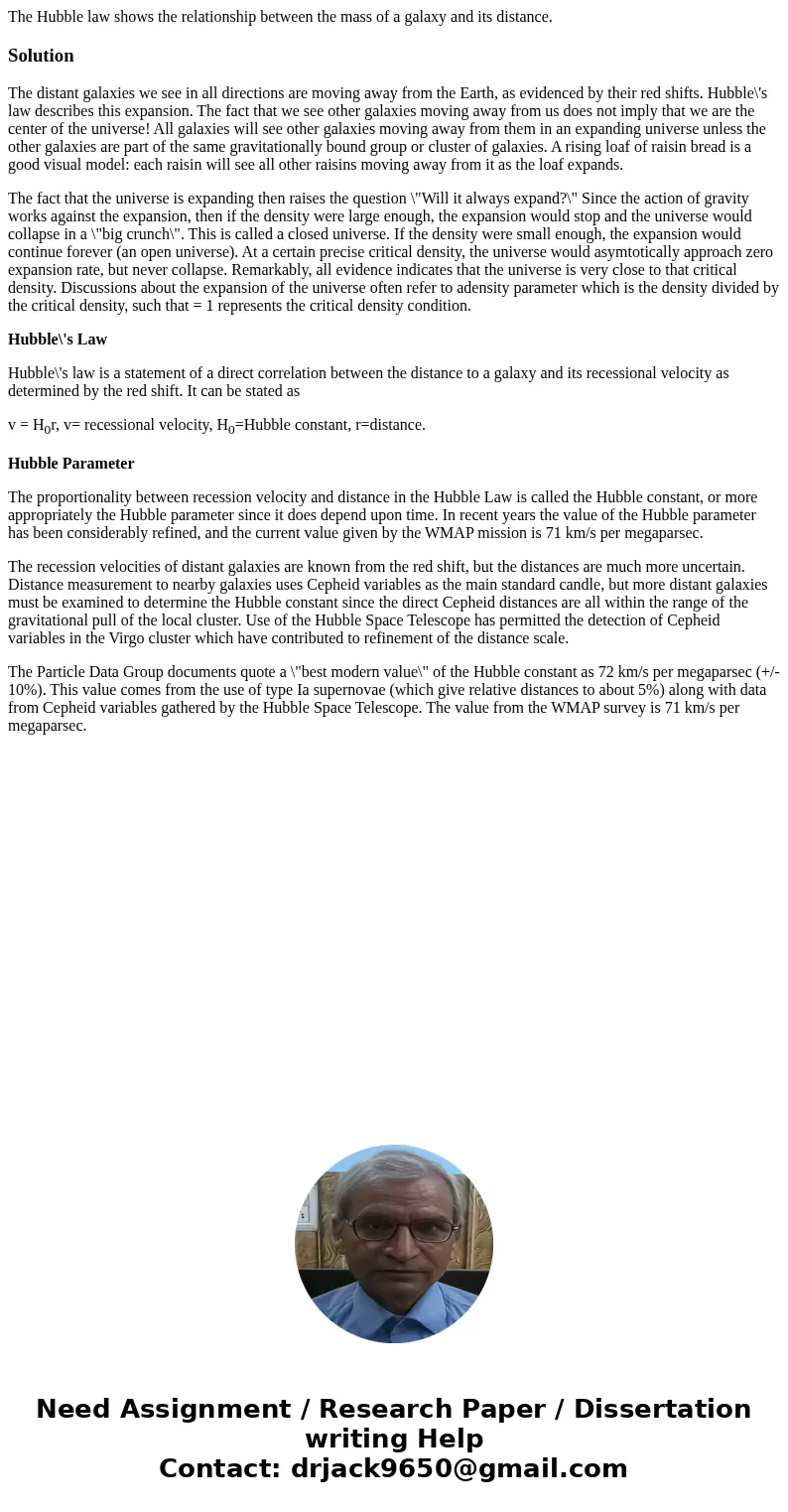The Hubble law shows the relationship between the mass of a
The Hubble law shows the relationship between the mass of a galaxy and its distance.
Solution
The distant galaxies we see in all directions are moving away from the Earth, as evidenced by their red shifts. Hubble\'s law describes this expansion. The fact that we see other galaxies moving away from us does not imply that we are the center of the universe! All galaxies will see other galaxies moving away from them in an expanding universe unless the other galaxies are part of the same gravitationally bound group or cluster of galaxies. A rising loaf of raisin bread is a good visual model: each raisin will see all other raisins moving away from it as the loaf expands.
The fact that the universe is expanding then raises the question \"Will it always expand?\" Since the action of gravity works against the expansion, then if the density were large enough, the expansion would stop and the universe would collapse in a \"big crunch\". This is called a closed universe. If the density were small enough, the expansion would continue forever (an open universe). At a certain precise critical density, the universe would asymtotically approach zero expansion rate, but never collapse. Remarkably, all evidence indicates that the universe is very close to that critical density. Discussions about the expansion of the universe often refer to adensity parameter which is the density divided by the critical density, such that = 1 represents the critical density condition.
Hubble\'s Law
Hubble\'s law is a statement of a direct correlation between the distance to a galaxy and its recessional velocity as determined by the red shift. It can be stated as
v = H0r, v= recessional velocity, H0=Hubble constant, r=distance.
Hubble Parameter
The proportionality between recession velocity and distance in the Hubble Law is called the Hubble constant, or more appropriately the Hubble parameter since it does depend upon time. In recent years the value of the Hubble parameter has been considerably refined, and the current value given by the WMAP mission is 71 km/s per megaparsec.
The recession velocities of distant galaxies are known from the red shift, but the distances are much more uncertain. Distance measurement to nearby galaxies uses Cepheid variables as the main standard candle, but more distant galaxies must be examined to determine the Hubble constant since the direct Cepheid distances are all within the range of the gravitational pull of the local cluster. Use of the Hubble Space Telescope has permitted the detection of Cepheid variables in the Virgo cluster which have contributed to refinement of the distance scale.
The Particle Data Group documents quote a \"best modern value\" of the Hubble constant as 72 km/s per megaparsec (+/- 10%). This value comes from the use of type Ia supernovae (which give relative distances to about 5%) along with data from Cepheid variables gathered by the Hubble Space Telescope. The value from the WMAP survey is 71 km/s per megaparsec.

 Homework Sourse
Homework Sourse